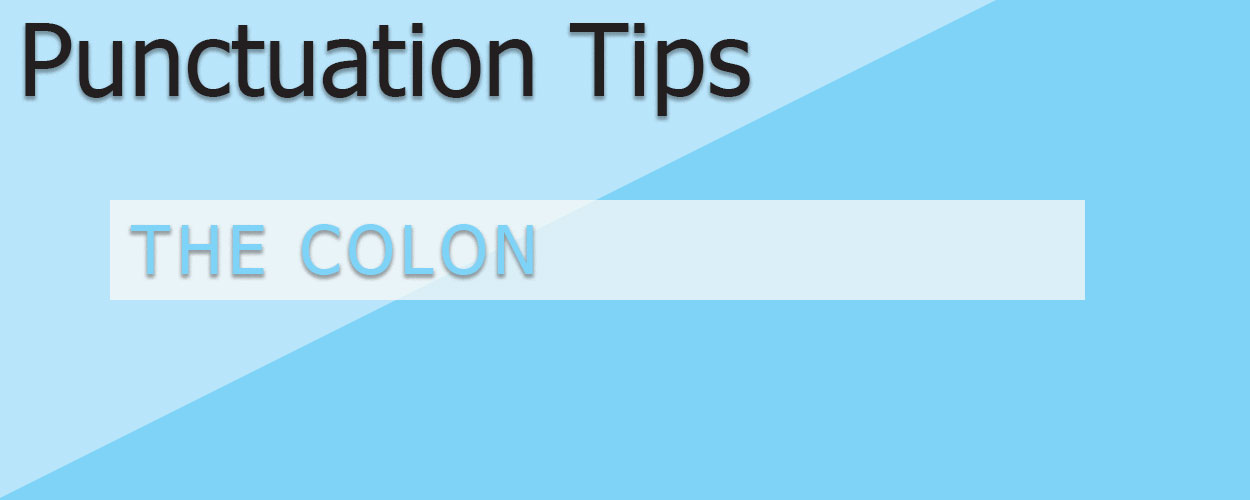

Posted: January 10, 2023
Definition: a punctuation mark (:) used to precede a list of items, a quotation, or an expansion or explanation.
There are three main uses for a colon: to introduce a list, statement, quotation, or summary; to introduce a clause relating to the preceding clause; and to indicate typographic distinctions. Essentially, it means “Here they are.”
Use a colon after the word follows or following.
Never use a colon after a form of the verb to be.
Use a colon to introduce a formal or lengthy statement or quotation, or in headlines to introduce an idea.
If the second word group summarizes the first, introduce it with a colon.
Use a colon to emphasize an explanatory relationship between two clauses.
If the relationship seems minor, use a semicolon instead of a colon.
Use a colon (without spaces) between chapter and verse in references to the Bible.
Use a colon (with no spaces) between the hour and minutes in time designations.
Use a colon (space after but not before) between the volume number and page number in a bibliographic reference even if the year appears within parentheses between the two.
Use a colon between the city and the publisher in bibliographic references.
Use a colon between a title and a subtitle.
Use a colon in play dialogue, following speakers’ names. Some publishers use a different typographic system for plays, but the general consensus is to use a colon.
A colon never precedes a parenthesis (except typographically).
Aaron, J.E. & Morrison, A. The Little, Brown Compact Handbook, 5th Canadian ed. Pearson, 2013, chap 5
Judd, K. Copyediting, A Practical Guide, 3rd ed. California, CA: Crisp Learning, 2001, chap 4
Tigerpetal Press is a small book press dedicated to publishing local authors and poets.